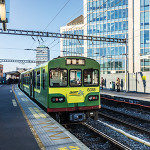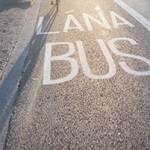Reassessing Dublin’s transport strategy
Projected increases in the figures for passenger journeys, population numbers and economic activity within the Greater Dublin area have prompted a review of a previously shelved transport strategy.
The National Transport Authority (NTA) has pressed ahead with its preparations for a revised Greater Dublin area transport strategy. A previous draft strategy had been drawn up in 2011. However, this and its attached flagship capital projects, Metro North and DART Underground, were shelved due to a lack of funding. The strategy, which also encompasses counties Meath, Kildare and Wicklow, was reopened late last year.
Changes in the intervening period have made a review of transport in the region essential. These include increases in passenger journeys between 2013 and 2014 and continued population growth. The overall population of Greater Dublin is expected to grow by 39 per cent between 2006 and 2030. The updated NTA strategy, a 20-year plan, will guide public transport policy within the area from 2015 to 2035.
A public consultation on the strategy ran from 27 January until 2 March and the updated strategy is expected to be presented to Transport Minister Paschal Donohoe in June of this year. The Dublin Chamber of Commerce has published its consultation recommendations which outlined that transport strategy is vital to economic growth and stated: “For Dublin to remain competitive these [additional] workers must be able to access the city easily.” Forecasts anticipate that by 2030, 24 per cent of the area’s population will live in hinterland regions while 85 per cent of jobs will continue to be located in the metropolitan area – an obvious problem for Dublin’s increasingly congested transport networks.
The North Dublin shortlist
1. HR2 – Heavy rail spur from Clongriffen to the airport and Swords
2. HR8 – Heavy rail line from Maynooth line to the airport and Swords*
3. LR3 – Light rail line from Cabra to the airport and Swords*
4. LR7 – Optimised Metro North
5. BRT5 – Combination of BRT2, BRT3 and BRT4
6. C1 – Combination of HR1 and LR3
* via tunnel under Glasnevin
The NTA is conducting a series of studies which will assist in deciding which key projects will be implemented under the strategy. These reviews include the Fingal-North Dublin study, the DART Underground business case review, bus rapid transit (BRT) and the Dublin Outer Orbital study.
The Fingal-North Dublin study is aimed at identifying the optimum medium- to long-term strategy for transport planning in the rapidly growing corridor which incorporates Swords and Dublin Airport. Identifying Fingal in particular, Minister Donohoe stated: “In Census 2011, it registered the third-highest growth rate in the country at 13.9 per cent; close to four times the population growth of Dublin city and almost double that of other Dublin county council areas. Failure to put appropriate plans in place now to meet the long-term transport needs of this area will mean increased congestion down the line which will ultimately threaten our future economic development.”

Last December, the NTA drafted a shortlist of six project options from a wider 25 proposals for the North Dublin region. This shortlist comprises two heavy rail options, two light rail options, a BRT scheme and a combination of different transport modes. All proposals aside from the BRT option suggest a rail link between Dublin Airport and the city centre.
Meanwhile, the strategy’s most ambitious project, DART Underground, is also being reanalysed. The planned services would provide a link between Balbriggan and Hazelhatch, serviced by five underground stations between East Wall and Inchicore. The business case prepared in 2010 is now being revised to account for new projections.
Progress on bus rapid transit projects will also be determined by the overall transport strategy. Three BRT routes are currently under consideration: Swords-Dublin Airport to the city centre; Blanchardstown to UCD; and Clongriffen to Tallaght. BRT systems employ ‘bendy’ multi-door vehicles to provide regular services and off-board ticketing which are intended to improve customer usage and reduce journey times.
In 2011, Metro West proposed a light rail link to service demand in key centres within the outer orbital corridor, including Swords, Blanchardstown, Clondalkin, Tallaght, Dundrum and Dún Laoghaire. This suggestion will now be reassessed to ensure that the most appropriate option will be implemented.
Several factors have contributed to the need for a review in transport strategy. Increased economic activity, a return to congestion, the unprecedented popularity of cycling, the introduction of the Luas Cross City line from St Stephen’s Green to Broombridge, and the development of customer interface have all had an impact. Minister Donohoe explained: “To ensure that the economic progress we are making is not impeded by the inability of people to get around, we must encourage the use of sustainable and public transport. We can do this by making sure that public transport is an attractive option.”
In February, the NTA announced the allocation of €25.9 million to fund sustainable transport projects within the Greater Dublin area.
The 109 projects are intended to promote the use of public transport, ease congestion and facilitate increased economic activity. The reviewed transport strategy will therefore include heavy and light rail developments, BRT, a core bus network and a cycle network.
NTA Chief Executive Anne Graham has asserted that the authority’s key objective “is to make sure that this is an integrated plan that addresses all public transport needs in the area.”
To date, this has been delivered by the Leap card, issued to one million customers, journey-planning mobile apps and plans to advance off-board ticketing.






